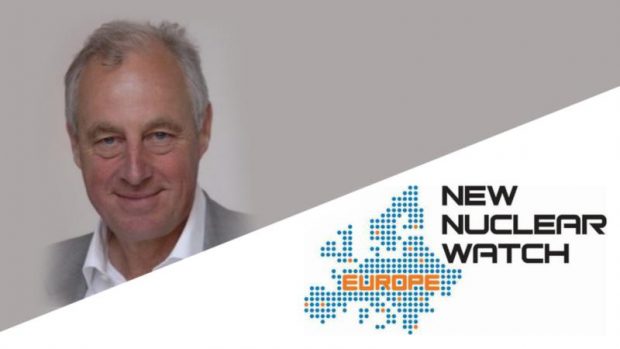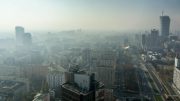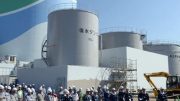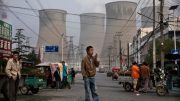
[New Nuclear Watch Europe]
The growing concern about climate change, as witnessed in Paris last year, has created the best opportunity for nuclear power in decades. New Nuclear Watch Europe (NNWE) has long argued that new nuclear build is critical to meeting Europe’s decarbonisation targets. However, the interest group recognises that, if Europe is serious about its climate change commitments, the much needed shift from fossil fuels to low carbon generation sources, such as nuclear, is potentially threatened by the economics.
Simply put, nuclear must be able to compete on economic grounds if it is to be fully accepted as part of the future energy mix. The technology’s environmental, security of supply, safety and job creation credentials are undeniable and offer huge reward to any country’s energy mix, but the technology needs to become cost competitive as well.
International cooperation lies at the heart of nuclear’s future. It is right that nuclear is subject to extremely rigorous safety requirements, even though these are more stringent than those applied elsewhere in the energy industry. However, it is important that the higher costs that these requirements impose on nuclear are minimised by harmonising them wherever possible.
The key argument anti-nuclear lobbyists put forward is that nuclear has an intrinsically negative learning curve, in other words, the cost per unit in a series increases. In fact, the opposite is true. The two main drivers behind the increasing cost of new nuclear build in the Western world over the last decade have been the lack of scale and standardisation needed for serial construction, which is in fact a consequence of the transition from Generation II to Generation III/III+ technology. Even as recently as the 1990s (source), we have witnessed a 10-13% reduction in cost (compared to first-of-a-kind) at the modest grid connection rate of one standardised reactor per year per vendor. It should be noted that an annual grid connection rate of two to three new reactors would deliver an estimated cost reduction in the region of 25-30% (versus a first-of-a-kind unit).
More collaboration between regulators in different jurisdictions, and simplifying the process for designs that have a track record of safe commercial use in one market to be approved for use in another are both ways that can help to reduce the cost of nuclear.
In the latest of a planned series of Brussels-based, Nuclear Energy Policy Forum events, NNWE called on pro-nuclear countries across Europe (that is, the EU and beyond), to work together even more closely and harmonise safety requirements with the aim of reducing the cost of new nuclear to the benefit of consumers and governments alike.
Safety requirements for nuclear new build vary considerably across the EU and its neighbouring countries. NNWE maintains that harmonisation of those requirements will drive costs down and allow the technology to compete on economic grounds. At the same time, NNWE is clear that in calling for the harmonisation of safety requirements it is not suggesting that any consequent reduction in the cost of nuclear new build should be at the expense of safety. Nuclear power stations have an outstanding record of safety in Europe and that should not be compromised.
The Brussels event brought together representatives from across the EU Institutions and the nuclear sector to consider whether the lack of harmonised safety requirements have made nuclear plants too expensive to build.
Delegates heard from Dalibor Mateju, Former Board member of ČEZ and former Head of UJV Branch Office in Ankara supporting Türkiye Atom Enerjisi Kurumu (TAEK), who is of the view that the standardisation of safety requirements would be a significant step forward in delivering cost reductions. Mr Mateju fears that, if left unchecked, anti-nuclear lobbying groups will continue to push for excessively strict and effectively onerous safety requirements with “a goal of increasing the cost of construction of nuclear power plants so that the return on investment becomes impossible”.
The political risk arising from anti-nuclear scaremongering coupled with the variance in safety requirements across European energy markets make it difficult for nuclear vendors to enter those markets and benefit from the economies of scale necessary to bring costs down. Something needs to happen to break down those barriers and create the kind of investment environment that vendors enjoy in their home markets.
Picking up that theme, Mikhail Pigulevsky, Nuclear Safety and Technology Expert at the Belorussian Nuclear Power Plant, told delegates that the final price of electricity generated at the Belorussian plant, which is now under construction, is very competitive “thanks to the economies of scale the vendor can enjoy.” Despite being based on the latest generation technology, which statistically (according to IAEA data) is among the most reliable in the world, the project is now facing mounting pressure by anti-nuclear groups in Brussels. Some even call for a ban or boycott of nuclear power imported the EU’s neighbouring countries.
NNWE finds those calls irresponsible. Fine particle air pollution associated with coal-fired power generation causes about 60,000 premature deaths each year across Europe. Creating trade barriers in low carbon and low pollution electricity in Europe, and blocking nuclear projects in the region makes it harder to cut that death toll.
NNWE is keen to ensure that safety requirements do not stifle new nuclear build, but encourage and promote it.
Professor Laurence Williams of Imperial College, London, UK told delegates that there must be an understanding between licensees and regulators, with the safe use of nuclear energy dependent on that understanding and the competence of both parties. Professor Williams suggested that “the delivery of safe nuclear power and the application of strong nuclear regulation are not incompatible”.
The pressure is certainly on, since the beginning of the century Europe has seen only 11 new nuclear power units connected to the grid, of which two were in the EU. That means to meet its decarbonisation targets Europe needs a five-fold increase in the new build rate achieved this century.
Applying the key principles of affordability, reliability and value creation for local supply chains, NNWE will continue to watch the nuclear sector to ensure that the right decisions, for all stakeholders, are made.
15 Dec. 2016
Originally published on Euractiv. eu






Be the first to comment on "Europe should harmonise safety requirements for new nuclear build"